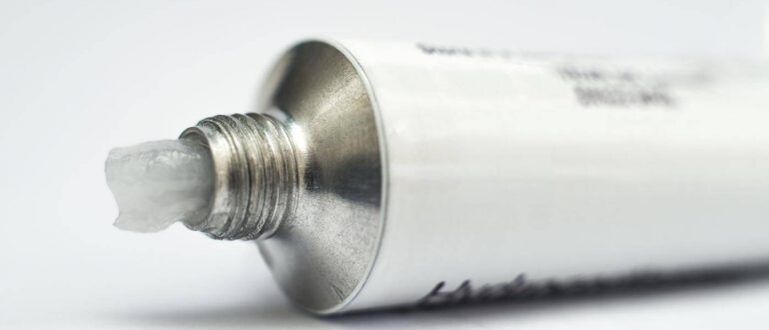Psoriasis is an autoimmune non-communicable disease that presents with severe red, inflamed, and peeling skin. The disease is difficult to treat and is wave-like - it progresses with episodes of remission and relapse. It is especially annoying when it affects the face, as this part of the body cannot be covered with clothing. Psoriasis on the face not only brings an itchy, uncomfortable feeling with itchy skin, but also causes mental depression due to the attitude of others not to understand that this disease is not contagious.
Is there psoriasis on the face?
In most cases, psoriatic skin defects affect the scalp, elbows and knees, neck, armpits, and inguinal cavities. Is it possible to get psoriasis on the face? Possibly, but this form is considered atypical and rare.
Psoriasis can be gross (regular) and seborrheic. This is the face most often affected by the second form, which is considered more severe due to the large papules that are particularly dense, as well as the scabs covered with a thin layer of yellowish slime.
Factors that contribute to the development of the disease
Doctors still can't come to a consensus on the cause of skin conditions, but believe that psoriasis is caused by:
- Autoimmune disorders;
- metabolic disorder.
Autoimmune disorders occur because the immune system is not working properly, when the immune system begins to perceive its own body in an active way. The predisposition of such disorders is hereditary, autosomal dominant or recessive.

Metabolic disruptions caused by nervous stress, malnutrition, chronic infections, pathologies of the gastrointestinal tract, hormonal disorders. In addition, the cause of improper metabolism can be uncomfortable climatic conditions and bad habits.
Psoriasis cannot occur on the face due to only one cause. It often leads to many adverse factors. In a separate group, doctors identify factors that increase the likelihood of the manifestation of the pathology:
- chronic inflammation;
- exchange failed;
- weakening of the immune system;
- hidden infection;
- frequent skin trauma (the main cause of psoriasis on the nose and other protruding places);
- severe or prolonged stress;
- frostbite and overheating;
- poisoning, including alcoholism;
- Take antibiotics, beta blockers, and antivirals uncontrollably.
What psoriasis looks like on the face: varieties
There are two types of facial psoriasis:
- It occurs at a young age - up to 40 years old. Peak incidence occurs between the ages of 16-24 years. The initial pathology often becomes gross, severe, difficult to treat, and often recurs.
- It affects people over the age of 40. The highest incidence occurs between the ages of 55-60. This type is less persistent, the symptoms are not as strong as the previous version, easier, better treatment.
There are two main types of psoriasis on the face: pustular psoriasis and seborrheic psoriasis. Vulgaris is diagnosed in most patients and rarely affects the face. For such a place, the more characteristic type of seborrheic psoriasis, often relapsing, is more difficult to treat and is characterized by the maximum severity of symptoms. The papules are particularly dense and large, scaly covered with a slime and yellowish in color, which is why they are easy to notice.
The disease can be localized in the following locations on the face:
- on the cheek;
- On the nose;
- on the eyelids;
- under the eyes;
- on the eyebrows;
- around the mouth.
Sometimes the disease affects the forehead; rarely, psoriasis on the lips is diagnosed. In a neglected version, skin defects can extend to the ears.
Clinical stages
Pathology does not occur instantaneously, progresses in stages, the stages are called stages. You should start treatment at the first stage, but for this you need to know how psoriasis begins.
The pathological stage can be determined by the symptoms:
- In the beginning, facial psoriasis is presented by papules that resemble acne spots. They itch, increase in size, form dry patches. The skin underneath is white.
- Then, the affected skin turns red, and the disease becomes active (psoriasis, or seborrhea). This stage is called progressive. The skin is very itchy, painful, peeling, covered with thick yellow scales.
- Then the affected areas begin to bleed and itch severely. Drops of blood flowed out after scraping a dense scab. The wound surface does not heal. Peeling off the whole face, the itching is unbearable.
- Then the quiescent phase begins, during which the growth of the papules stops and the desquamation subsides. The patches on the face are bluish in color.
- The final stage is recession. All symptoms gradually disappeared. The disease progressed to remission, peeling and itching completely disappeared, papules and plaques disappeared.
Since psoriasis is chronic, after remission there is bound to be a relapse. The duration of remission is individual and largely depends on the correct treatment, as well as the facial care. If the pathology is not treated, then instead of remission, various complications can arise.
Consequences and complications
Complications of skin disease can be local (the disease spreads to other parts of the body) and systemic. The neglected form of psoriasis often leads to arthritis, and if it moves to the eyelids and ears, then it can cause blindness and deafness. In addition, comorbidities are aggravated in patients: diabetes mellitus, hypertension, obesity, Crohn's syndrome, heart failure. That's why it's important to get treatment on time.
How to cure psoriasis on face
It is not possible to completely cure the disease, as it is chronic, but years of remission can still be achieved. For this, the treatment of psoriasis on the face must be complete - complex, which includes the following procedures:
- vitamin therapy;
- hormonal and non-hormonal therapy with special preparations of systemic and local action;
- physical therapy;
- maintain a suitable diet;
- folk medicine.
Before treatment, it is recommended to consult a dermatologist and pass a standard set of tests to determine the features of the pathology. Therapy is selected individually and begins with special preparations against psoriasis.
Prepare
The first outbreak, especially with a complex one, is treated with systemic drugs. Retinoids fight the manifestations of psoriasis on the face quickly and powerfully. They stop the pathological cell division, so the disease stops progressing and goes into remission.
Anti-allergy medications will help reduce itching, redness, inflammation, and swelling (treatment of symptoms). A drug with succinic acid in the composition can speed up the recovery of the skin and improve its condition. To nourish the body in general, people only need to inject B vitamins. Instead of injections, children can take complex vitamins in tablet form.
If the drug is not effective, the strongest immunosuppressant against psoriatic rash is used instead. It is used as a last resort due to the high potential for side effects.

In the mild form of the disease, as well as psoriasis in childhood, they try to treat it with topical drugs - ointments, creams, gels.
How to apply psoriasis on the face, the doctor will tell you. Usually indicated:
- ointment with 0. 5% salicylic acid;
- ointments based on tar and sulfur, not less than 10% (concentration of the active substance);
- naftalan cream 5%;
- glucocorticoid drugs;
- non-hormonal cream of vegetable origin based on grease.
Creams and gels, as well as similar preparations for external use, are applied to skin imperfections 2-4 times a day until the symptoms disappear completely. Hormonal and non-hormonal anti-inflammatory drugs enhance the effect of drug therapy:
- non-hormonal - shark oil, vitamin F, creams based on natural and medicinal oils, ointments with calcipotriol;
- Hormonal ointment for psoriasis.
In addition to the listed drugs, it is imperative to take sedatives (valerian, motherwort), since stress aggravates symptoms. After the pathology passes to a calm stage, physiotherapy is prescribed:
- UV to accelerate skin regeneration;
- radiation therapy against itching and inflammation;
- ultrasound to reduce redness;
- Magnetic therapy to improve metabolism.
Treatment with folk remedies
How to treat psoriasis on the skin, recommended by traditional medicine. The mask will help get rid of psoriasis on the face quickly at home:
- from the infusion of dried chamomile - incubate the flower, stretch, dip gauze in the solution and apply to the face, hold for 20 minutes;
- from aloe - cut the leaves and rub the affected areas of the face with juice;
- from turmeric - a spice that is diluted with water to a paste state and applied in patches. You need to keep 8-12 hours.
The mask can be applied every other day or daily before bed for 2-4 weeks. After that, you should take a short break, after which the course of treatment can be repeated.
Another powerful remedy for psoriasis on the face is essential oil concentrates (coconut, sea buckthorn, juniper). Oil should be added to the care cream or to the water for washing. They soften, nourish and moisturize the skin, creating favorable conditions for the peeling of seborrheic psoriasis.
Pathology is well neutralized by sea salt, which must be added to masks, rinses and scrubs. Alternative treatments will not replace formal methods, but will greatly speed up the healing process. Such treatment is recommended in combination with the use of pharmaceutical preparations.
Diet and lifestyle
All patients (even children) should follow a diet that eliminates all potential allergens: citrus fruits, coffee, chocolate, colorful vegetables, seafood. If psoriasis is on the forehead or cheeks, then you definitely have to give up sugar and starchy foods.
In addition, the problem can be solved by giving up bad habits - alcoholism and smoking. The right way of living will have to be maintained continuously, even after the disease goes into remission.
Facial skin care
Taking care of the problem skin on the face needs to be careful, regular and properly. For care, it is better to use a daily moisturizer for the skin of the face with vitamin D in the composition. It will improve the quality of the skin, soften the skin and saturate it with nutrition to restore. And you also need:
- avoid vigorous rubbing of the skin with a cloth towel (it is better to wipe the face after washing with a paper towel);
- in the time of recurrence, do not use makeup for the face, especially in the hot season;
- Do not peel or hurt the skin with peeling;
- replace the razor with a shaver (advice for men);
- regularly protect facial skin from the sun's ultraviolet rays with the help of special creams and hats.
Can I sunbathe with psoriasis on exposed areas of the body? No, the affected area must be protected from the sun's rays, especially during the acute phase, as ultraviolet rays can cause complications.
Despite the specific nature of psoriasis on the face, with a comprehensive, competent treatment, if all the doctor's recommendations are followed, the prognosis of long-term remission is favorable.























